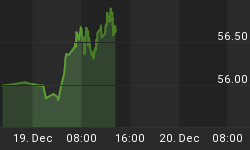What a wonderful and glorious time to talk with you. With a reduction in U.S. government spending to avoid a shutdown of the government, greatest political change in 60 years of U.S. history has taken another step. What are the implications of this historic event? Will the trajectory of U.S. financial mismanagement be changed? Some possibility of that happening does exist, and must be acknowledged. Remember, that in all things related to investments, the second derivative dominates. The second derivative of U.S. government debt may become negative. However, change is slow, and we still need to deal with today's speculative bubble in precious metals.
In an era of a Speculative Bubble in precious metals, talking about fundamentals seems somewhat a waste of words. Neither Gold nor Silver today is about investing in real assets, as very little investing is being done in physical metals. We live now today in a world of Paper Gold and Paper Silver. In particular, those arguing for purchase of Silver today are effectively recommending investment in Paper Silver, as that is what is driving price. With that reality, and as the valuation table below suggests, Silver continues to bea sale candidate.
Little argument exists that the Federal Reserve is the most irresponsible central bank of our era. Living in a fantasy world of Keynesian mythology, it continues to expand its balance sheet in a reckless manner. Bernamke's intentional devaluation of the U.S. dollar has clearly had the unintended consequences of sending the price of oil skyrocketing upward, and precious metals into a bubble. As always with bubbles, the bill, in terms of pain, will be high.

In the above chart is plotted Federal Reserve Credit, blue line and left scale. That is essentially the asset side of the Federal Reserve's balance sheet. It has been projected out past the scheduled end of the nonsense known as QE-2. Red line, using right axis, is the rate of change for the Federal Reserve's balance sheet. It clearly portrays an irresponsible monetary policy never seen outside of a war or economic calamity.
Expansion of the central bank's balance sheet is expected, and not always a bad thing. However, when that expansion is excessive and accelerating, negative ramifications cannot be ignored. The massive acceleration of rate of expansion in the Federal Reserve's balance sheet is highlighted by the arrow in that chart. It has decimated the dollar, inflated currencies such as the Brazilian real to painful levels, caused price of oil to rise to more that US$110, and induced a speculative bubble in precious metals.
While all of that is known, another event, coming this Summer, is pictured in that graph. QE-2 is scheduled to end in June. That event will be like applying the emergency break in a car while doing 60 miles(100 kilometers) per hour. That sudden breaking could have a dramatic impact on many things, from interest rates to oil prices to price of precious metals.

As if the above were not sufficient to muddy the water, we have the picture in the above graph. Black line, using left axis, is the size of foreign central bank holdings of U.S. government debt held at the Federal Reserve. These values are included in the Federal Reserves's weekly report.
Notice how the slope of that line started to change about November of last year. Since then, the rate of acquisition of U.S. government debt by foreign central banks has slowed dramatically. That development is highlighted by the red line, using right axis, of the 6-month rate of change, annualized. It has fallen to the lowest level in years. While not yet negative, that development could have global ramifications.
Why might foreign central banks be slowing their purchases of U.S. government debt, and why might they begin to liquidate some? Saudi Arabia might be a good example. Despite the higher revenues generated by today's oil price, the kingdom is spending wildly to prevent unrest in that nation. All across the board, governments have higher bills for food and fertilizer, and are spending money to appease the unruly populace. How this sorts out and what it means are beyond the ability of today's tea leaves, but we will be watching.
While the above discussion suggests that much uncertainty does exist, these issues do not demand paying any price for any asset. They may argue for the ownership of Gold, but do not justify buying it at prices created in a panic driven electronic market for paper. They certainly do not justify buying Silver at today's prices as it has become detached from the base source of its value, Gold.
| US$GOLD & US$SILVER VALUATION Source: www.valueviewgoldreport.com | ||||
| US$ GOLD | US$ GOLD % | US$ SILVER | US$ SILVER % | |
| CURRENT | $1,473 | $40.70 | ||
| SELL TARGET | $1,970 | 34% | $35.50 | -13% |
| LONG-TERM TARGET | $1,814 | 23% | $32.91 | -19% |
| OVER VALUED | $1,110 | -25% | $20.14 | -51% |
| FAIR VALUE | $854 | -42% | $15.49 | -62% |
| RECOMMENDED ACTION | Gold preferred | Sell Silver | ||
GOLD THOUGHTS come from Ned W. Schmidt,CFA,CEBS as part of a joyous mission that has saved a multitude of investors from the financial abyss of paper assets. He is publisher of The Value View Gold Report, monthly, and Trading Thoughts. To receive these reports, go to: www.valueviewgoldreport.com















